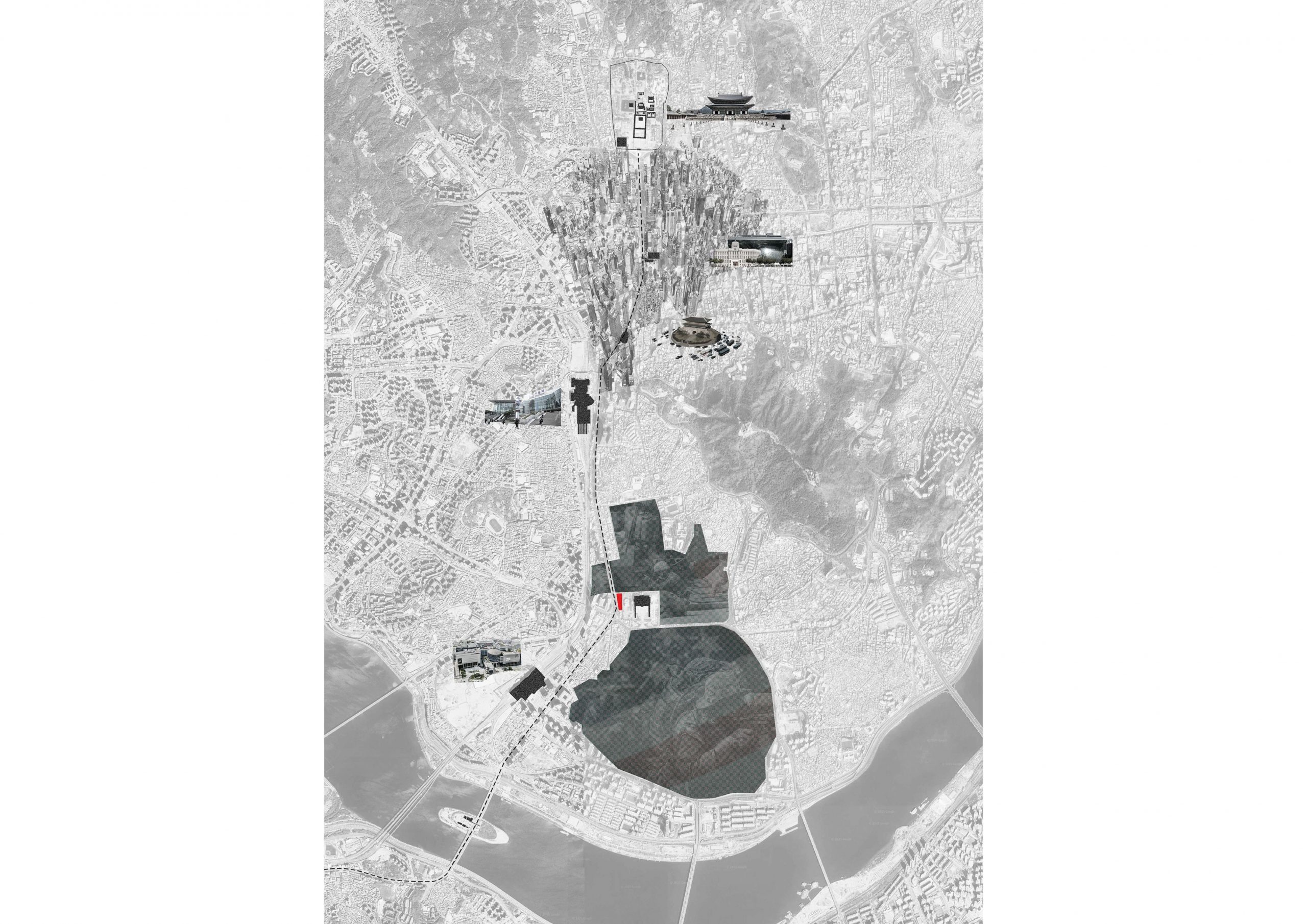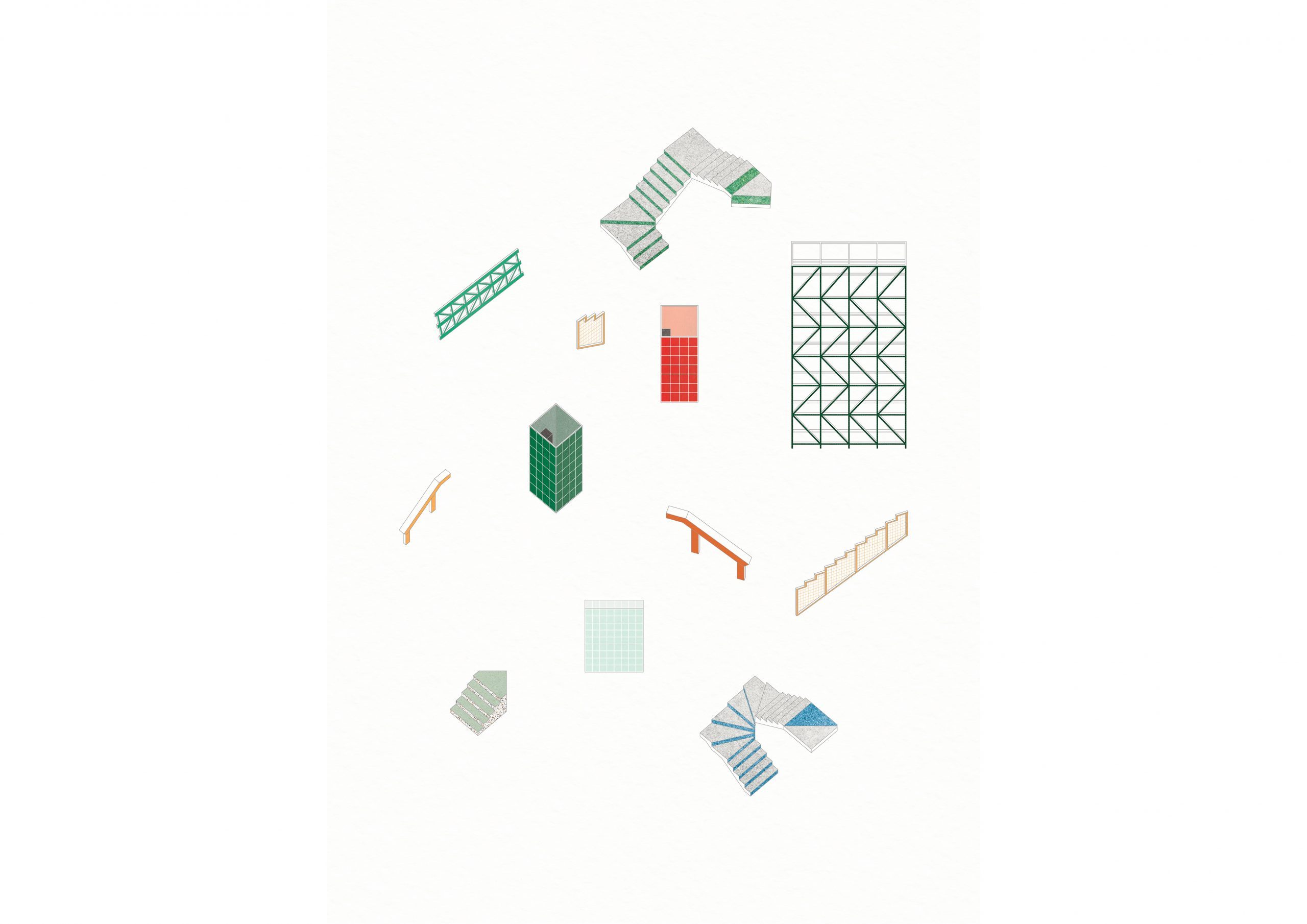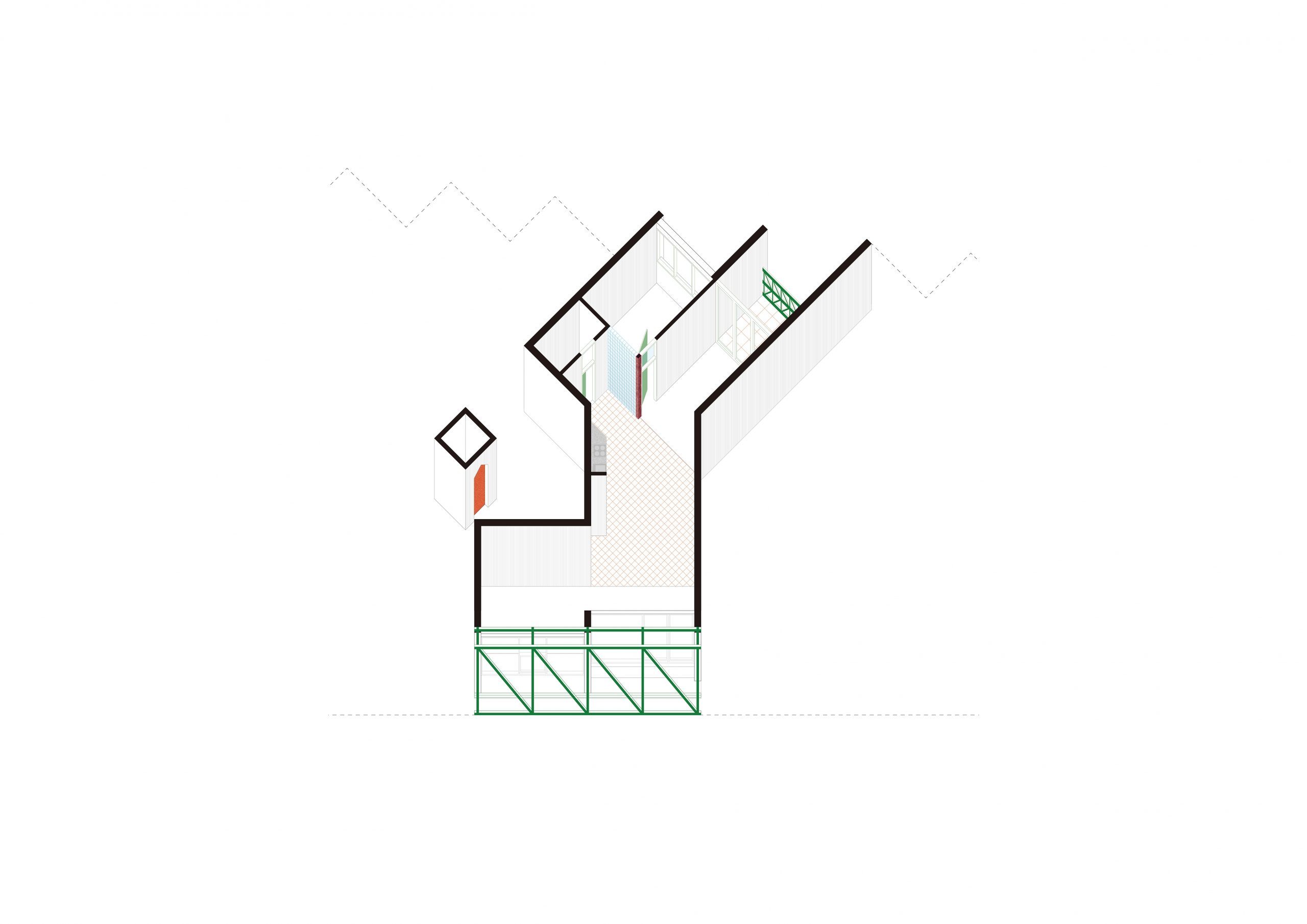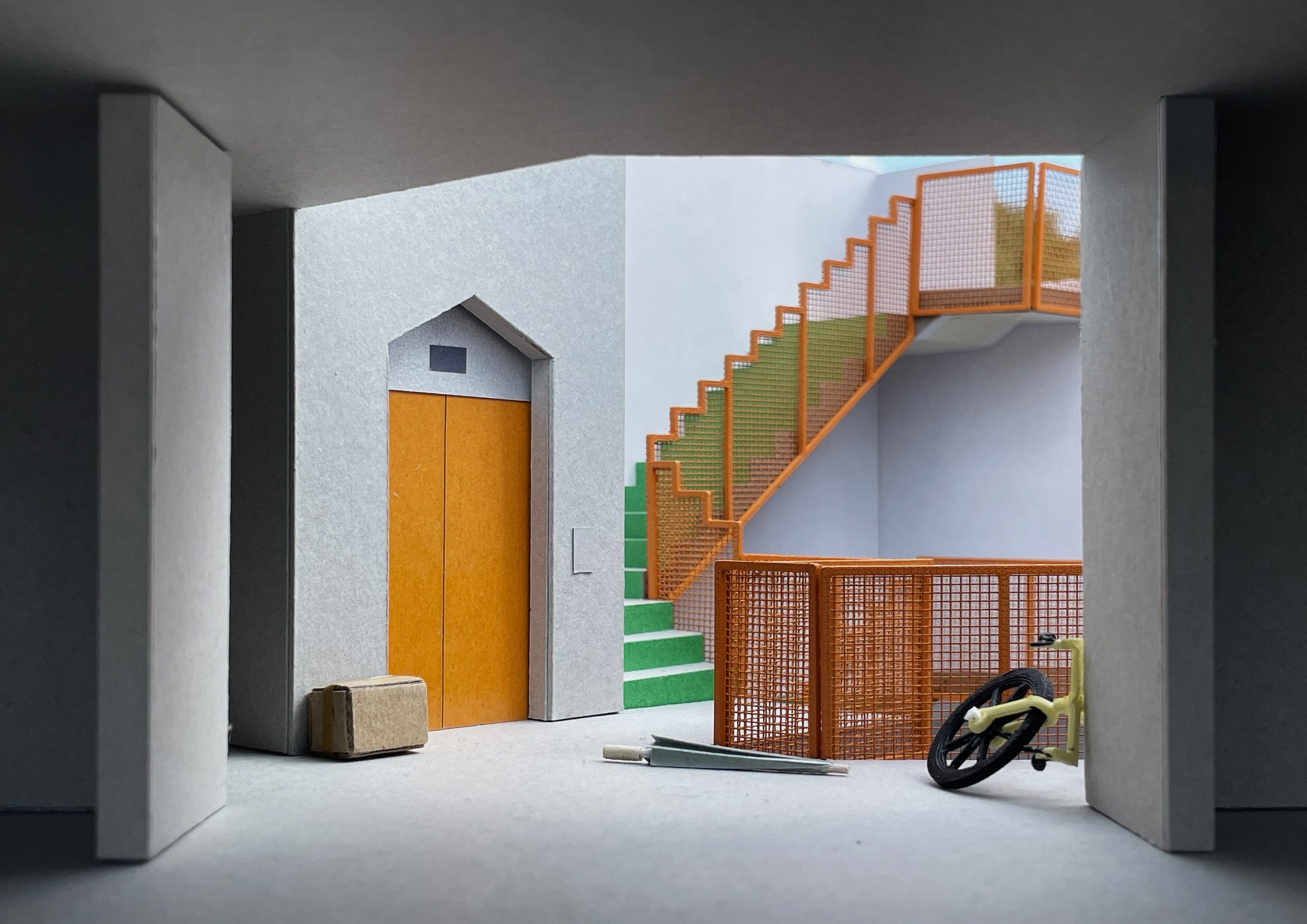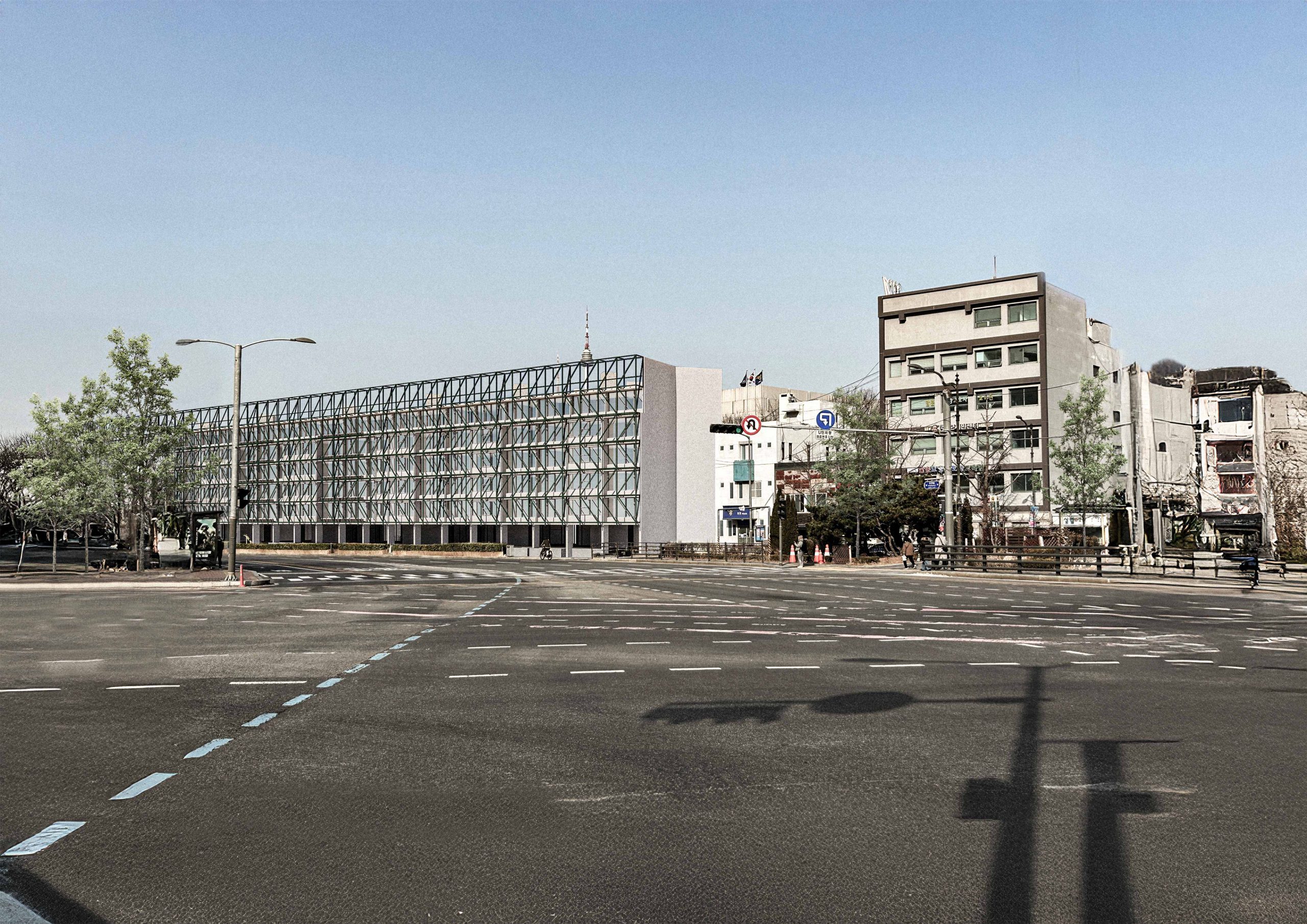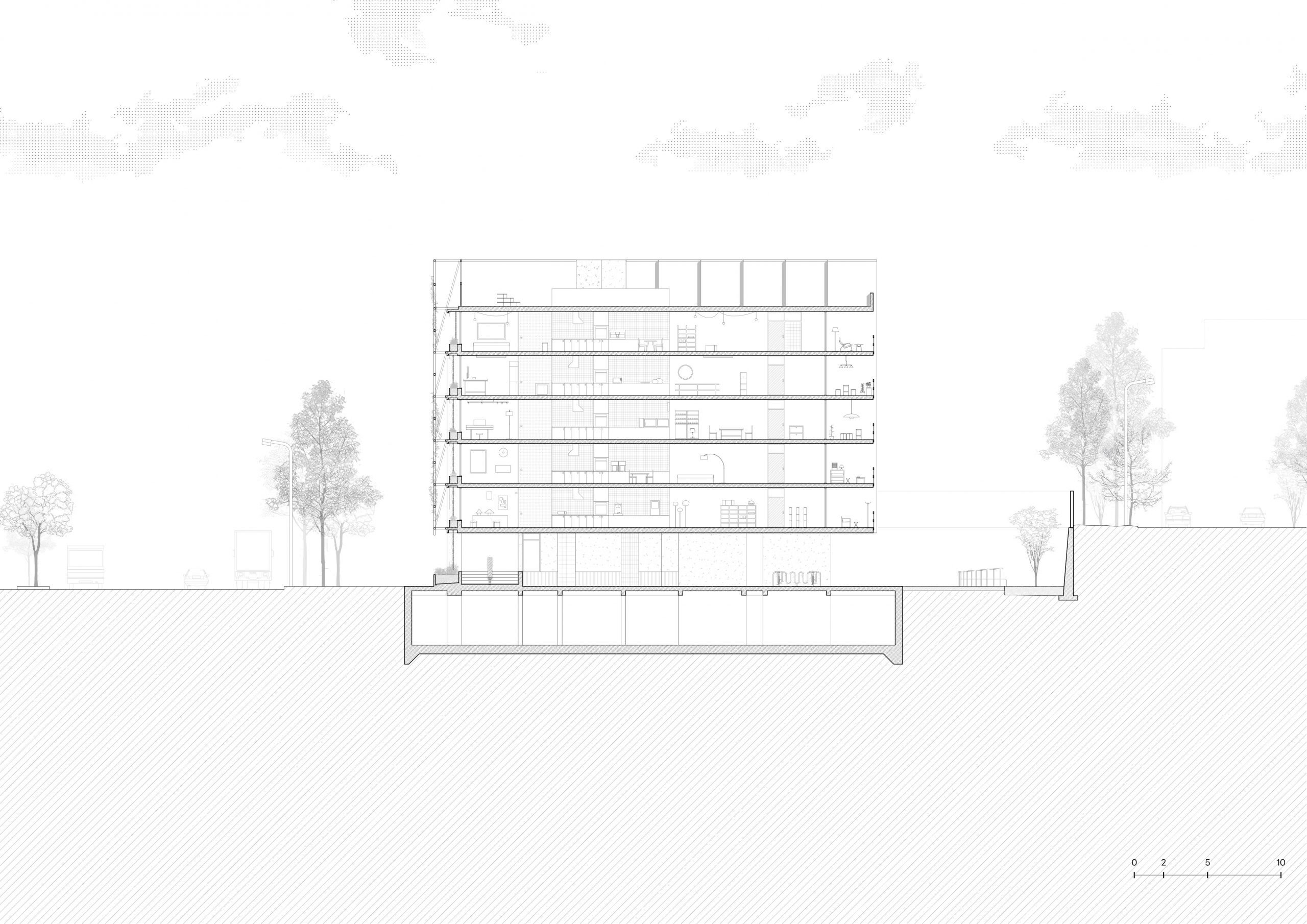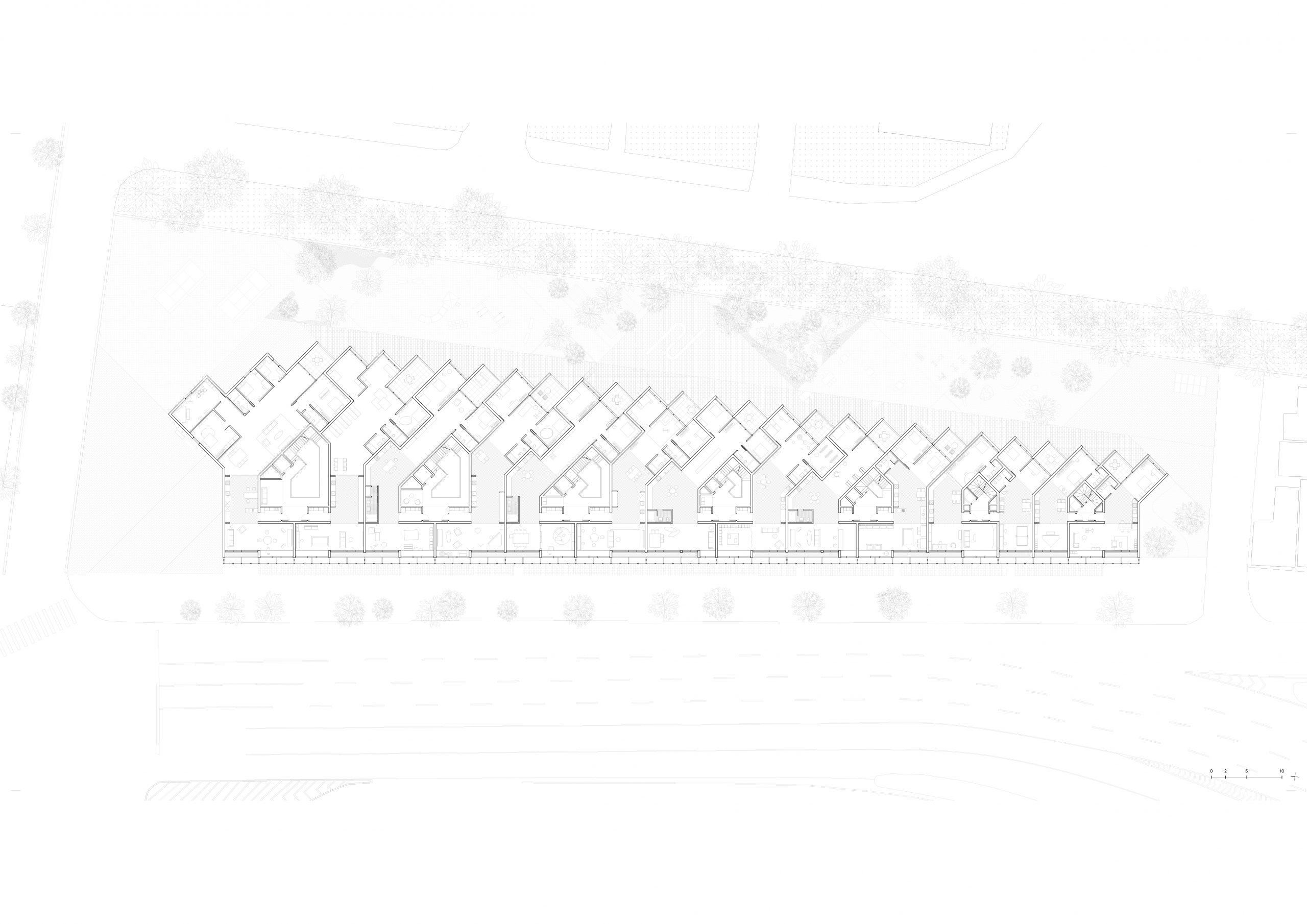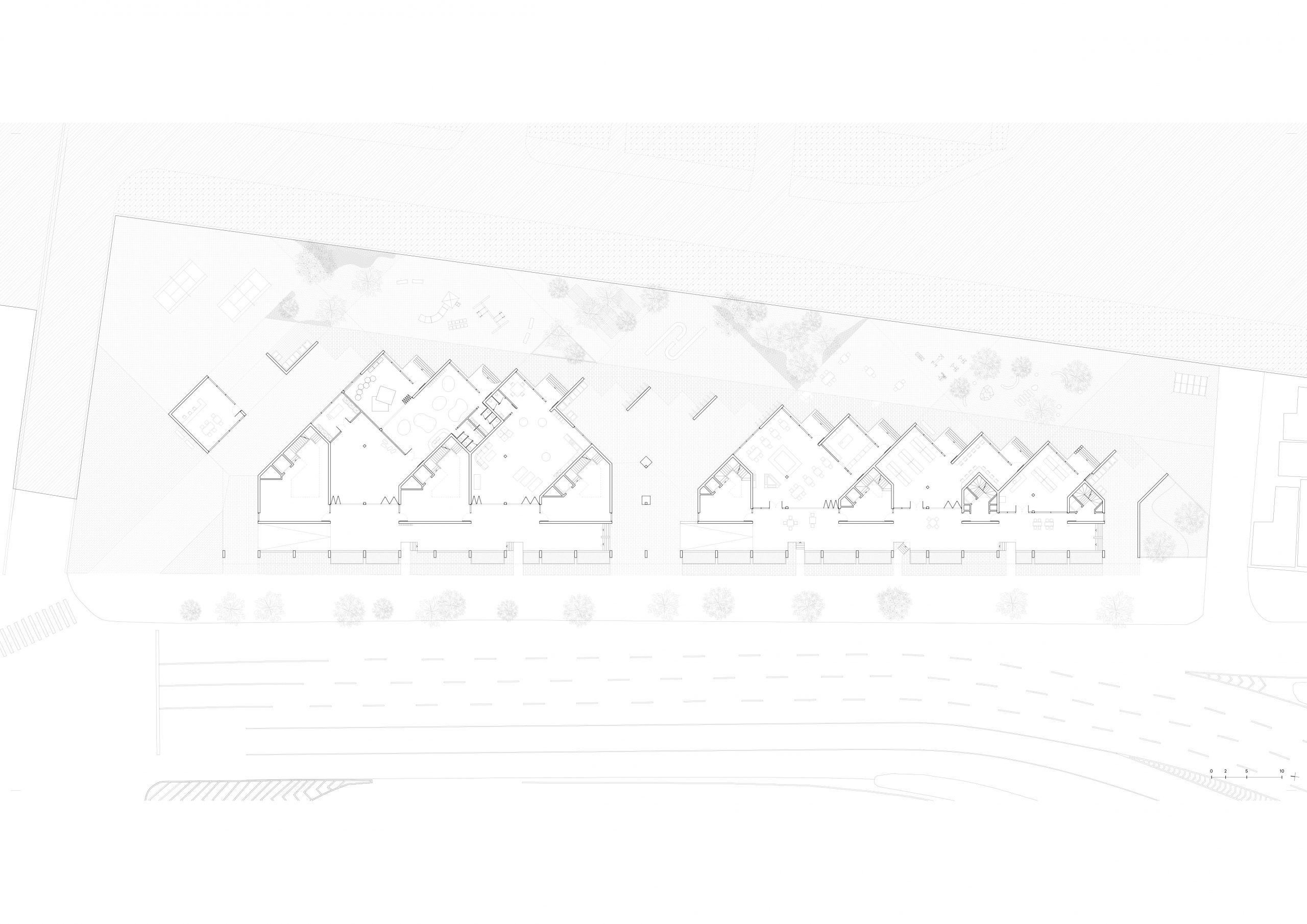김도현 _ 삼각의 집
텔레비전 프로그램에서는 새로 이사 갈 집을 찾거나 잘 꾸민 집을 자랑하는 장면이 송출되고, 뉴스에서는 재건축과 집값, 전세 대출 같은 경제적 문제가 연일 이어진다. 두 매체 모두 ‘집’을 이야기하지만, 그 의미는 같지 않다. 현대사회에서 집은 일상의 공간인 동시에 자산의 수단이다. 이는 사람들이 집을 구분 짓고 평가하게 만들어, 가진 것과 가지지 못한 것 사이에서 방황하게 한다. 부유층과 빈곤층이 뒤섞여 살아가는 서울에서, 누군가의 집은 목표가 되고 누군가의 집은 스쳐 가는 과정으로 휘발된다. 집은 우리에게 가장 가까운 위기다.
본 프로젝트는 용산의 노후 폐가 밀집지에 공동주택을 신축해 주거 기능을 회복하고, 그곳에 서울의 주거 현실을 투영해 질문하는 것을 목표로 한다. 대상지는 전쟁기념관 전면의 부지로, 남산 통경축 확보를 위한 고층 개발 제한과 자본 논리 때문에 오랫동안 외면받은 땅이다. 프로젝트는 오피스나 공공시설이 아닌, ‘주거’를 내세워 도시적 응답을 적극 시도한다. 광화문 광장에서 시청, 숭례문을 지나, 서울역, 용산역 그리고 노들섬으로 이어지는 서울의 주요 대로에 면하는 공동주택은 어두운 용산에 새로운 이미지를 부여한다.
프로젝트는 삼각지라는 도시적 입지에서 발생하는 외적 요인과 주거라는 내적 의지가 공존하며 형태화된다. 국가상징도로를 면하는 건물은 도시적 역할을 부여받는다. 대상지인 삼각지는 용산참사, 미군기지 등의 이유로 오랜 기간동안 개발되지 못한 채 밤중에는 어두운 모습을 띈다. 오피스나 공공시설과 달리 6시 이후 활성화되는 공동주거의 특성을 반영하여 대로변에는 개인 작업실 혹은 취미 공간을 배치해, 초저녁이나 야간에 외부로 불이 켜진 모습을 드러낸다. 또한 남향을 선호하는 한국주거의 특성이 반영되어 각각의 유닛은 45도로 절곡되어 남동향을 획득하고 대로변의 소음으로부터 보호받는 침실이 배치된다. 주거의 내적 의지와 도시적 역할이 충돌해서 만들어진 형태는 동쪽과 서쪽에 각기 다른 입면을 형성하며 건축물의 정체성을 만든다.
점점 얇아지는 건물의 형상은 땅의 형태에 순응하는 태도이며, 전쟁기념관 옹벽과 함께 안마당을 규정하고, 서로 다른 규모의 주거 유닛을 획득하는 전략이다. 서측 입면에는 덩굴 식물이 자랄 수 있는 격자 프레임이 설치되어 낮은 조도의 서향 햇빛에 대응하는 동시에 향후 조성될 용산공원과 해당 지역의 이미지를 구축한다.
On television programs, scenes are broadcast where people search for new homes to move into or show off their well-decorated houses. Meanwhile, the news is filled daily with economic issues such as redevelopment, housing prices, and jeonse loans. Both media talk about “home,” but the meaning is not the same. In modern society, a home is both a space for daily life and a means of accumulating assets. This duality leads people to categorize and evaluate homes, causing them to wander between those who have and those who do not. In Seoul, where the wealthy and the poor live side by side, someone’s home becomes a goal for others, while for some, their home is a fleeting stop along the way. Home is the closest crisis to us.
This project aims to restore residential functions by building new multi-family housing in an area of Yongsan densely packed with old, abandoned houses, and to reflect on Seoul’s housing reality by posing questions through this space. The site is located in front of the War Memorial of Korea, a plot that has long been neglected due to restrictions on high-rise development to preserve the view corridor to Namsan and the logic of capital investment. The project actively seeks an urban response by focusing on “residence,” rather than offices or public facilities. Facing one of Seoul’s main boulevards that connects Gwanghwamun Square, City Hall, Sungnyemun, Seoul Station, Yongsan Station, and Nodeul Island, this multi-family housing offers a new image to the otherwise dark area of Yongsan.
The project is shaped by the coexistence of external factors arising from the urban location of Samgakji and the internal intention of residence. The building, facing a national symbolic road, is given an urban role. Samgakji, the site in question, has remained undeveloped for a long time due to incidents such as the Yongsan tragedy and the presence of the U.S. military base, and appears dark at night. Reflecting the characteristic of residential complexes that become active after 6 PM—unlike offices or public facilities—personal studios or hobby spaces are arranged along the main road, so that lights are visible from outside in the early evening or at night. Additionally, reflecting the Korean preference for south-facing homes, each unit is angled 45 degrees to secure a southeast orientation, with bedrooms placed to shield from street noise. The form, created by the collision of the internal will for residence and the building’s urban role, results in different facades on the east and west, establishing the identity of the architecture.
The increasingly slender shape of the building is an attitude of conforming to the shape of the land, defining a courtyard together with the retaining wall of the War Memorial, and is a strategy to acquire residential units of various sizes. On the west facade, a lattice frame is installed to allow climbing plants to grow, responding to the low-intensity western sunlight and helping to establish the image of the future Yongsan Park and the area.
